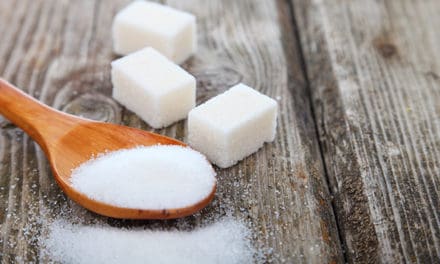
Back to school may look different this year. For some, it may mean returning to a classroom, just like in September’s past. For others, it may be a virtual classroom or homeschooling, be it by choice or circumstance. Regardless of what the new school day looks like for your family, we do a few things at our house to help make learning as successful as possible, no matter where it happens. In addition to strategic breakfast, a few foundational nutrients help ensure a smooth school (and work) day.
Start the Day With Protein
Standard breakfast fare such as cereal, bagels, muffins, waffles, etc. is typically lacking in protein. The amino acids from protein are building blocks for neurotransmitters that are central to brain function. Just as importantly, protein, along with fat and fiber, help stabilize blood sugar. When blood sugar is not up and down all day, attention span and concentration tend to follow. Plummeting blood sugar will trigger a surge of adrenalin that can unleash restlessness and a need to fidget.
Eggs, Greek yogurt (sans sugar), or a scoop of protein powder into oatmeal can set everyone up for success for the rest of the day. Check out my article I Don’t Like Smoothies: Confessions of a Protein Powder Fan for more ideas on convenient, protein-packed breakfasts.
Plummeting blood sugar will trigger a surge of adrenalin that can unleash restlessness and a need to fidget.
Omega-3
Omega essential fatty acids are genuinely brain food. These healthy fats are critical for optimal brain development during pregnancy and early childhood. They remain crucial throughout life for healthy mood balance, cardiovascular health, and more.
Studies show improvements in learning ability, memory,[1] reading, spelling, and behavior [2] in school-age kids whose diets were fortified with omega-3. Benefits are even more pronounced in children with pre-existing learning difficulties. Omega-3 supplements also appear to improve kids’ sleep quality and quantity, which is another factor in a successful school day.[3]
When it comes to shopping, be wary of omega-3 supplements for kids, or grown-ups, in gummy form. Although these are popular and seem convenient, the large size of the omega-3 molecule makes it difficult to get much into the candy-like delivery system, so you may end up ingesting more sugar than healthy fat. For the same reason, the fish oil in soft gelatin capsule delivery systems – while often an excellent choice for adults – can be too large for kids to swallow. Your best bet is finding a tasty liquid form that the whole family enjoys. We rotate between a couple of favorites that are yummy enough to get drizzled onto yogurt or into a smoothie.
Although these are popular and seem convenient, the large size of the omega-3 molecule makes it difficult to get much into the candy-like delivery system, so you may end up ingesting more sugar than healthy fat.
L-theanine
An amino acid found in green tea, L-theanine is responsible for the zen-like buzz you get from a high-quality matcha beverage. L-theanine promotes calm focus by turning the brain’s dial towards alpha waves, which predominate during meditation or the “flow state.” Of course, green tea also contains caffeine, which the teacher might not appreciate. Fortunately, L-theanine is available on its own, sans stimulants, in capsules or chewable tablets.
Research in adults shows that L-theanine is an effective anxiety reliever, which is a growing problem among children and can impact learning. Clinical studies in school-aged kids confirm this nutrient is very safe, even in fairly high doses.[1] A typical dose would be 50–100 mg before school, and that can be repeated after school and/or at bedtime.
Magnesium
In 2011, experts at Psychology Today crowned magnesium “The Original Chill Pill” [2]– a well-deserved title. Often described as the anti-stress mineral, magnesium is famous for relieving muscle cramps and twitches, soothing restlessness, and simply helping to stay relaxed. The importance of magnesium for kids doesn’t get nearly enough attention. Kids aged 9–13 require a respectable 240 mg of the nutrient daily, which can be tricky to achieve through diet alone. To bridge the magnesium gap, I used to open one of my capsules to sprinkle into my son’s mouth. Thankfully we now have a kid-friendly chewable tablet that is much more convenient, making 50 mg of magnesium citrate a natural part of the morning routine. Like omega-3s, magnesium is another nutrient that promotes peaceful slumber, so everyone takes some at bedtime. Like good sleep, high-quality nutrition can significantly affect the ability to focus, concentrate, and learn. What we do in the morning lays the foundation for the rest of the day.
A few simple steps can make a dramatic difference to help your children have a successful school day, today, and every day.
References:
- Lyon MR, Kapoor MP, Juneja LR. The effects of L-theanine (Suntheanine®) on objective sleep quality in boys with attention deficit hyperactivity disorder (ADHD): a randomized, double-blind, placebo-controlled clinical trial. Altern Med Rev. 2011; 16(4):348‐354.
- https://www.psychologytoday.com/ca/blog/evolutionary-psychiatry/201106/magnesium-and-the-brain-the-original-chill-pill












